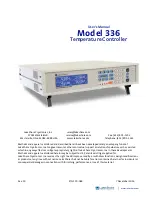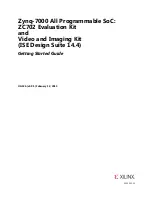
Chapter 4
What You Need to Know about Moves
©
National Instruments Corporation
4-11
You can calculate the maximum RPS/s using the following equation:
where
Amax
= 32 counts/sample
2
Ts
= sample period in seconds per sample
R
= counts or steps per revolution
and is constrained according to the following equations:
acceleration
≤
256
×
deceleration
deceleration
≤
65536
×
acceleration
or
For a typical servo axis with 2,000 counts or steps per revolution operating
at the 250 µs update rate, calculate the maximum RPS/s increment using the
following equation:
RPS/s values stored in onboard variables are in double-precision
IEEE format (f64).
NI 73
xx
Velocity Override in Percent
The Load Velocity Override function takes a single-precision
floating-point (f32) data value from 0 to 150%, but velocity override is
internally implemented as a velocity scale factor of 0 to 384 with an
implicit fixed denominator of 256. NI-Motion uses the velocity override to
increase the speed of the calculation for the sake of calculation speed—the
division is a shift right by eight bits. The resolution for velocity override is
therefore limited to 1/256, or about 0.39%.
Note
The conversion from floating-point to fixed-point is performed on the host
computer, not on the motion controller. To load velocity override from an onboard variable,
you must use the integer representation of 0 to 384, where 384 corresponds to 150%.
maximum RPS/s
Amax
1
Ts
-----
2
×
1
R
---
×
=
MAX
1
r
---
×
32
1
250
µ
s
---------------
2
1
2000
------------
×
×
256,000 RPS/s
=
















































